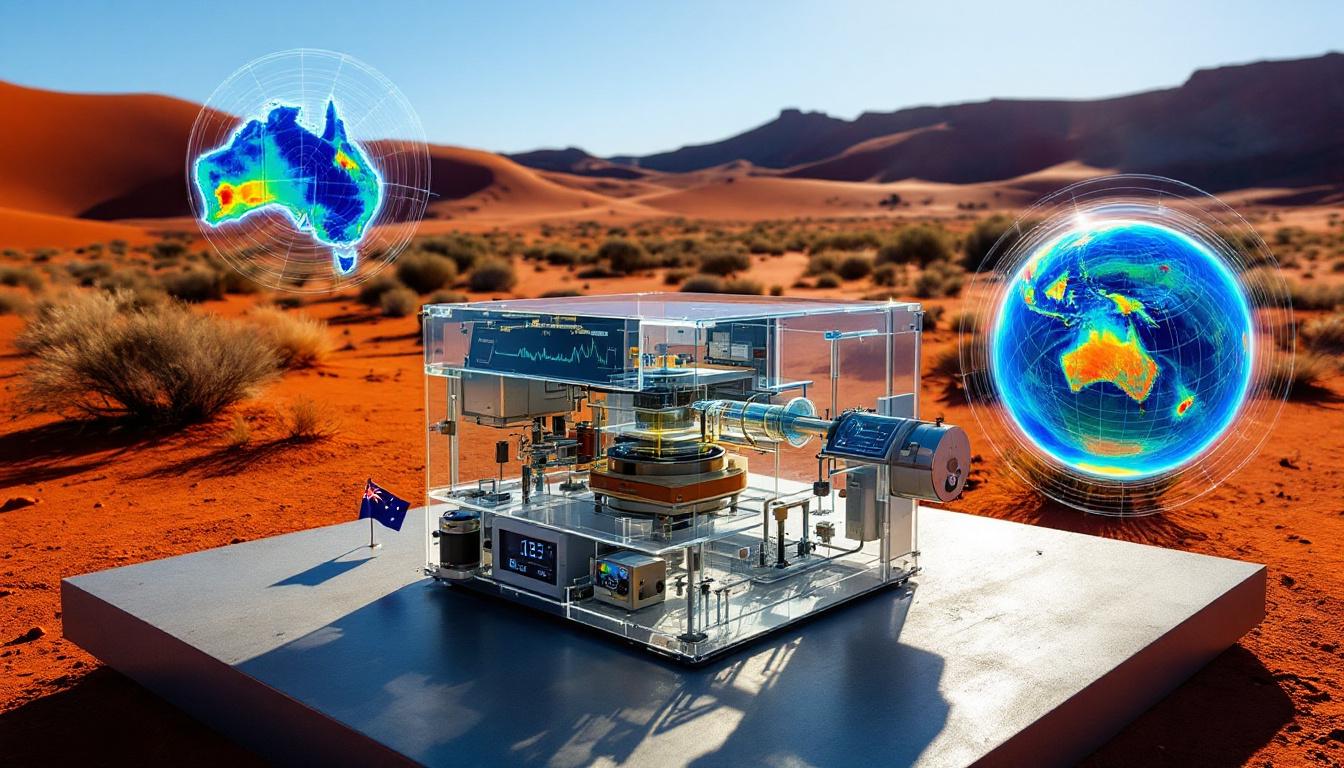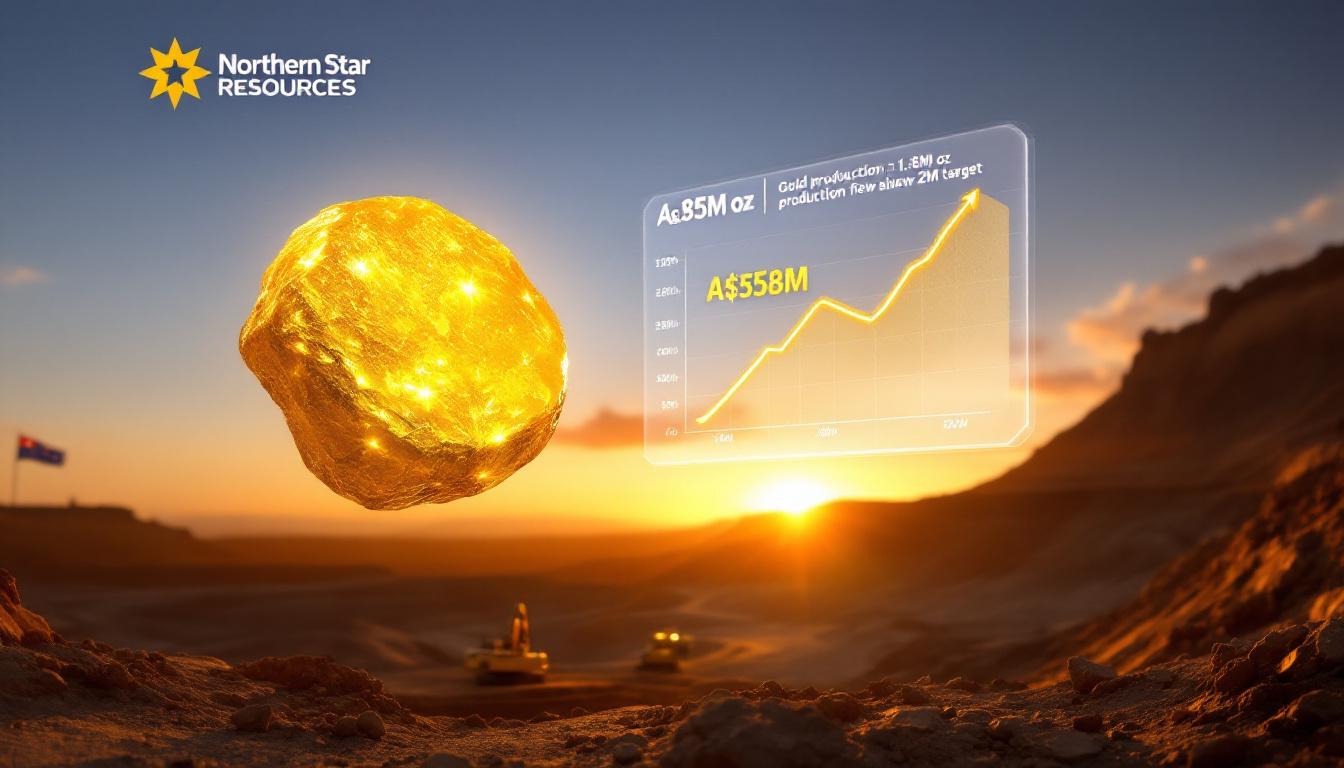What is Biomining and Why Does It Matter?
Biomining represents a revolutionary approach to mineral extraction that harnesses the natural abilities of microorganisms to recover metals from ore. This biotechnology has become increasingly important as the mining industry faces significant challenges in meeting global copper demand.
The scale of this challenge is staggering. According to Dr. Liz Dennett, CEO of Endolith, "Between now and 2050, the world needs more copper than the history of human civilization," driven primarily by electrification, data centers, and the green energy transition.
Compounding this demand issue is the steady decline in ore quality. Average copper ore grades have fallen dramatically from approximately 3% a century ago to just 0.7% today. This decline means mining companies must process significantly more material to extract the same amount of copper.
Traditional extraction methods often recover only 20-60% of available copper from low-grade ores, leaving substantial value in the ground or in waste piles. This inefficiency becomes increasingly problematic as global copper supply forecast estimates show accelerating demand.
"The copper cliff is real. We're facing unprecedented demand just as ore grades continue their century-long decline." – Dr. Liz Dennett
Biomining offers a compelling solution by enhancing recovery rates from existing operations without requiring new mines or major infrastructure changes. By deploying specialized microorganisms, mining companies can extract additional copper from ore bodies that would otherwise be uneconomical to process using conventional methods.
This approach aligns with both economic imperatives (maximizing return from existing assets) and environmental considerations (reducing the need for new mine development) as the world faces unprecedented demand for copper in the clean energy transition.
How Do Microbes Extract Copper from Ore?
The Science Behind Microbial Extraction
Microorganisms used in biomining are known as extremophiles – organisms that thrive in conditions most life forms would find lethal. These remarkable microbes have evolved over billions of years to extract energy from mineral sources.
These specialized microorganisms can:
- Survive in highly acidic environments (pH 1-2)
- Tolerate extreme temperatures (up to 70°C)
- Naturally oxidize and reduce iron and sulfur compounds
- Break down mineral matrices through metabolic processes
Dr. Dennett explains the appeal of these organisms: "We take nature's oldest miners—microbes that have been breaking down rocks for billions of years—and run them through an Olympic boot camp. We get them really good at breaking down recalcitrant ores."
The process works because these microbes catalyze chemical reactions that liberate copper from mineral matrices. These reactions would occur naturally but extremely slowly; the microbes accelerate them dramatically.
Unlike genetically modified organisms, commercial biomining typically uses naturally occurring microbial communities that have evolved to thrive in these harsh environments. This approach leverages natural adaptation rather than laboratory manipulation.
The Biomining Process Step-by-Step
-
Ore Preparation: Low-grade copper ore is crushed and formed into large heaps
-
Microbial Inoculation: Specially selected microbial communities are introduced to the heap through a bioreactor system
-
Leaching Process: Sulfuric acid solution containing the microbes is sprayed over the ore heaps
-
Microbial Action: The microbes catalyze reactions that release copper ions into solution through oxidation of sulfide minerals
-
Collection: The copper-rich solution (pregnant leach solution) flows to collection ponds
-
Recovery: Copper is recovered from solution through electrowinning or solvent extraction
Modern biomining operations enhance this process with real-time monitoring and AI in mining operations that drive adjustments. Sensors embedded in the heap track temperature, pH, dissolved oxygen, and microbial activity, while machine learning algorithms optimize conditions for maximum copper recovery.
This process is particularly effective for processing low-grade ores that might otherwise be uneconomical to mine using conventional methods. By increasing recovery rates by 10-80% over traditional methods, biomining can transform marginal deposits into viable resources.
What Types of Microbes Are Used in Copper Biomining?
Extremophile Characteristics
The microorganisms employed in biomining have remarkable adaptations that make them ideal for metal extraction:
| Characteristic | Description | Benefit to Biomining |
|---|---|---|
| Acidophilic | Thrive in highly acidic environments (pH 1-2) | Can function in the sulfuric acid solutions used in heap leaching |
| Thermophilic | Tolerate high temperatures (up to 70°C) | Remain active in the heat generated by oxidation reactions |
| Chemolithotrophic | Derive energy from inorganic compounds | Can "eat" minerals directly for energy |
| Environmental Resilience | Adapted to harsh mining conditions | Don't require carefully controlled laboratory conditions |
| Community Dynamics | Function as diverse microbial consortia | Provide redundancy and resilience compared to single-species approaches |
The dominant species in these communities often include Acidithiobacillus ferrooxidans, Leptospirillum ferrooxidans, and various Sulfolobus species. Each brings unique metabolic capabilities to the mineral dissolution process.
Natural vs. Engineered Microbial Communities
Biomining operations typically use natural microbial communities rather than genetically modified organisms. Dr. Dennett explains this approach using a compelling analogy:
"We use non-GMO microbial consortia… like a resilient 'brown mutt' from the pound. They're street-smart survivors that can handle whatever the heap throws at them."
This natural community approach offers several advantages:
- Greater resilience through community diversity
- Faster regulatory approval and market adoption
- Reduced concerns about environmental release
- Natural adaptation to changing conditions within heaps
These microbial communities are often sourced through bioprospecting – the process of collecting environmental samples from extreme environments like acid mine drainage sites, hot springs, and volcanic areas to identify useful microorganisms.
Companies like Endolith have developed specialized methods to identify, isolate, and cultivate these natural communities for commercial applications. Their approach involves testing multiple community compositions against specific ore types to determine the optimal microbial mix for each application.
How Effective is Microbial Copper Extraction?
Recovery Rate Improvements
Modern biomining operations can significantly increase copper recovery rates beyond what's possible with conventional methods. The improvements are substantial:
- Traditional heap leaching typically recovers 20-60% of available copper
- Adding optimized microbial communities can increase recovery by an additional 10-80%
- The effectiveness varies based on ore type, temperature, and secondary minerals present
These figures aren't theoretical – they represent documented performance improvements in both laboratory and field conditions. Dr. Dennett notes that "in dynamic heap systems, we deploy the right microbes at the right time using AI-driven SCADA systems" to maximize extraction efficiency.
The most dramatic improvements often occur with challenging ore types like chalcopyrite, where conventional chemical leaching may recover less than 30% of the contained copper, while biomining approaches can achieve over 60% dissolution.
Factors Affecting Microbial Extraction Efficiency
Several variables influence how effectively microbes can extract copper:
-
Ore Mineralogy: Different copper-bearing minerals respond differently to microbial action. Chalcopyrite (CuFeS₂) is notoriously difficult for conventional leaching but responds well to certain microbial communities.
-
Temperature: Microbial activity typically increases with temperature up to certain thresholds. Most commercial operations operate in the mesophilic (20-40°C) to moderate thermophilic (40-60°C) range.
-
Particle Size: Smaller crushed particles provide more surface area for microbial action, but excessively fine material can reduce permeability and oxygen flow.
-
Oxygen Availability: Most biomining microbes require oxygen for their metabolic processes. Ensuring adequate aeration throughout the heap is crucial for performance.
-
Nutrient Availability: Supplemental nutrients may enhance microbial growth and activity, particularly nitrogen, phosphorus, and potassium.
-
pH Levels: Maintaining optimal acidity supports microbial communities while also facilitating metal solubilization.
Advanced biomining operations monitor and adjust these parameters in real-time to maximize metal recovery. Systems like Endolith's use embedded sensors throughout the heap to track conditions and make adjustments automatically.
What Technological Advances Are Enhancing Biomining?
AI Optimization and Monitoring
Modern biomining operations incorporate sophisticated technologies that transform what was once a relatively simple process into a precisely controlled biotech operation:
- AI systems analyze data to optimize microbial community composition based on ore characteristics
- Real-time monitoring tracks environmental conditions within heaps using distributed sensor networks
- Cloud-based dashboards visualize performance metrics and allow remote management
- Predictive analytics anticipate changes in heap conditions and recommend preemptive adjustments
- Automated systems adjust parameters like irrigation rates, nutrient addition, and air flow
As Dr. Dennett explains, "Our cloud dashboard unpacks the heap leaching 'black box.' We prove value beyond sci-fi experiments by showing exactly what's happening inside the heap in real-time."
This technological sophistication allows operators to move beyond the "spray and pray" approach of traditional heap leaching toward precision biometallurgy with predictable outcomes.
Plug-and-Play Implementation
One of the most significant advances in modern biomining is the development of modular, plug-and-play systems that can be integrated with existing operations:
- Mobile bioreactors can be transported on flatbed trailers and deployed without major infrastructure changes
- Monitoring systems connect to existing heap leach infrastructure
- Implementation doesn't require mine shutdown or significant operational changes
- Minimal new infrastructure investment is needed beyond the bioreactor and monitoring systems
- Cloud-based monitoring enables remote oversight and reduces on-site staffing requirements
This approach significantly reduces barriers to adoption for mining companies interested in implementing biomining technologies. The typical implementation timeline is remarkably fast compared to traditional mining projects:
- Initial ore testing: Weeks to months
- System design and fabrication: 3-6 months
- On-site installation: Weeks
- Initial results: Visible within the first month of operation
- Full optimization: Ongoing for several months after implementation
This rapid deployment capability is particularly valuable in an industry facing urgent pressure to increase production to meet surging demand.
What Copper Ores Benefit Most from Biomining?
Challenging Ore Types
Biomining shows particular promise for certain types of copper ores that are difficult to process through conventional methods:
- Low-grade porphyry copper deposits: Biomining can make marginal grades economically viable
- Complex sulfide ores like chalcopyrite: Microbial action breaks through passivation layers that inhibit chemical leaching
- Ores containing arsenic (enargite, tennantite): Microbes can tolerate high arsenic levels that complicate conventional processing
- Secondary copper minerals in oxide zones: Biomining can extract residual copper after primary recovery
- Tailings and waste rock with residual copper content: Reprocessing becomes economically viable with enhanced recovery rates
Dr. Dennett's enthusiasm for these challenging materials is evident: "We love wonky ores! Marginal deposits are where we find fulfillment—turning uneconomical resources into viable ones."
The ability to economically process these challenging materials could significantly expand global copper resources at a time when new discoveries are becoming increasingly rare.
Marginal Deposits and Waste Materials
Some of the most promising applications for biomining involve materials that would otherwise be uneconomical to process:
- Sub-economic ore bodies that fall below cutoff grades (typically <0.3% copper)
- Historic mine tailings with residual copper content
- Waste rock piles from previous mining operations
- Low-grade stockpiles set aside during previous mining
- Complex ores with penalty elements that complicate conventional processing
By making these resources economically viable, biomining can increase copper supply without requiring new mine development. This approach aligns with growing environmental and social pressures to minimize new land disturbance while maximizing recovery from existing operations.
Endolith's work with enargite (Cu₃AsS₄) demonstrates this potential. This arsenic-bearing copper mineral poses significant challenges for conventional processing, but specialized microbial communities can effectively solubilize the copper while managing the arsenic content.
How Does Biomining Compare to Traditional Extraction Methods?
Environmental Considerations
Biomining offers several potential environmental advantages compared to conventional processing:
- Reduced need for new mine development: By increasing recovery from existing operations and waste materials
- Lower energy requirements: Operating at ambient temperatures rather than the 1000°C+ required for smelting
- Potential reduction in sulfuric acid plant emissions: By utilizing microbes rather than chemical leaching
- Ability to process materials at ambient temperatures: Avoiding the carbon footprint of high-temperature processes
- Potential for remediation of acid mine drainage: Microbial processes can help manage problematic mine effluents
"Biomining isn't zero-impact, but it reduces the need for new mines and acid plants while maximizing recovery from resources we've already disturbed." – Dr. Liz Dennett
However, biomining still involves the use of acidic solutions and must be managed carefully to prevent environmental impacts. Responsible implementations include robust containment systems, water management plans, and ongoing monitoring.
The environmental calculus often favors biomining when considering the full lifecycle impacts compared to developing new mines or using high-temperature pyrometallurgical processes. The carbon footprint of biomining typically ranges from 0.5-1 ton CO₂ per ton of copper produced, compared to 2-4 tons for conventional smelting operations.
Economic Factors
The economics of biomining can be compelling, particularly for challenging ore types:
- Lower capital expenditure: Implementing a biomining system typically costs a fraction of building new processing facilities
- Increased recovery from existing operations: Additional revenue without major new infrastructure
- Potential to process previously uneconomical materials: Turning liabilities into assets
- Reduced operational costs: Lower energy requirements and fewer chemical inputs
- Shorter implementation timeline: Months rather than years for conventional projects
These economic advantages have driven increased interest in biomining technologies as companies seek to maximize returns from existing assets while addressing increasing demand pressures.
The rapid deployment capability is particularly valuable in the current market environment. While traditional mine development can take 10-16 years from discovery to production, biomining systems can be implemented in under a year, providing a much faster path to increased production.
What Other Metals Can Be Extracted Using Microbes?
Beyond Copper: Expanding Applications
While copper has been the primary focus of commercial biomining operations, the technology shows promise for other metals:
- Lithium extraction from clay deposits: Early-stage laboratory results show promise for this critical battery metal
- Nickel recovery from laterite ores: Pilot testing demonstrates potential to unlock challenging resources
- Gold liberation from refractory ores: Microbes can break down sulfide matrices that encapsulate gold particles
- Uranium solubilization from low-grade deposits: Historical commercial applications with renewed interest
- Rare earth element recovery from various sources: Early research shows potential for bioaccumulation and extraction
As Dr. Dennett explains, "Cash is king, focus is queen. We're proving copper first, then lithium, nickel, and REEs." This strategic approach recognizes the need to demonstrate commercial success with copper before expanding to other metals.
Research continues to expand the range of metals that can be effectively recovered using microbial processes. Some applications, such as cobalt recovery from pyrite-rich tailings, show particular promise as demand for battery metals increases.
Technological Readiness Levels
Different metals are at varying stages of technological readiness for commercial biomining:
| Metal | Commercial Status | Key Challenges |
|---|---|---|
| Copper | Commercially deployed | Optimizing for specific ore types |
| Gold | Limited commercial use | Complex mineralogy in refractory ores |
| Uranium | Historical commercial use | Regulatory and environmental concerns |
| Nickel | Pilot testing | Process economics vs. conventional methods |
| Lithium | Laboratory testing | Scaling up from lab to field operations |
| Rare Earths | Early research | Complex separation requirements |
As technology advances and pressure to secure critical minerals increases, more metals are likely to become commercially viable targets for biomining operations. The growing expertise in AI-optimized microbial communities may accelerate this expansion beyond copper.
The economics of bioleaching become increasingly favorable as conventional mining faces rising costs, declining grades, and growing environmental restrictions. For metals like lithium, where conventional production faces significant water usage and environmental challenges, biomining may offer a more sustainable pathway to meeting growing demand.
What is the Future of Microbial Copper Extraction?
Integration with Traditional Mining
The future of biomining likely involves greater integration with conventional mining operations rather than wholesale replacement:
- Hybrid processing circuits combining biological and chemical approaches for optimal recovery
- Pre-treatment of ores with microbes before conventional processing to improve overall recovery
- Biological polishing stages to increase overall recovery from conventional processing circuits
- In-situ applications for deeper ore bodies that are uneconomical to mine conventionally
- Mine reclamation innovations that combine remediation with resource recovery
Want to Discover the Next Major Mineral Finding Before the Market?
Discovery Alert's proprietary Discovery IQ model instantly identifies significant ASX mineral discoveries, transforming complex data into actionable investment insights. Visit our discoveries page to understand why major mineral findings historically deliver exceptional returns, and start your 30-day free trial to position yourself ahead of the market.




